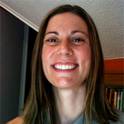
“The butterfly is in the chrysalis stage,” Victory informed us as she pointed to the brown chrysalis in the jar on the lab bench, “It was an egg then it formed its chrysalis or pupa and then it will become a butterfly.” When we asked her how she would describe this to her friends, she remarked, “It is like when you go into the dressing room and put on a church dress- you act like someone different.” In this example, Victory, a kindergartener, was translating the scientific language taught to her in the science classroom into a language her friends would understand. Understanding marginalized students’ ability to translate scientific knowledge in a manner that acknowledges cultural and discursive identity is needed in science education (Brown, Ryoo, & Rodriguez, 2010; Lee, 2001).

Presented at the annual meeting of the American Educational Research Assoiciation, Philadelphia, PA.